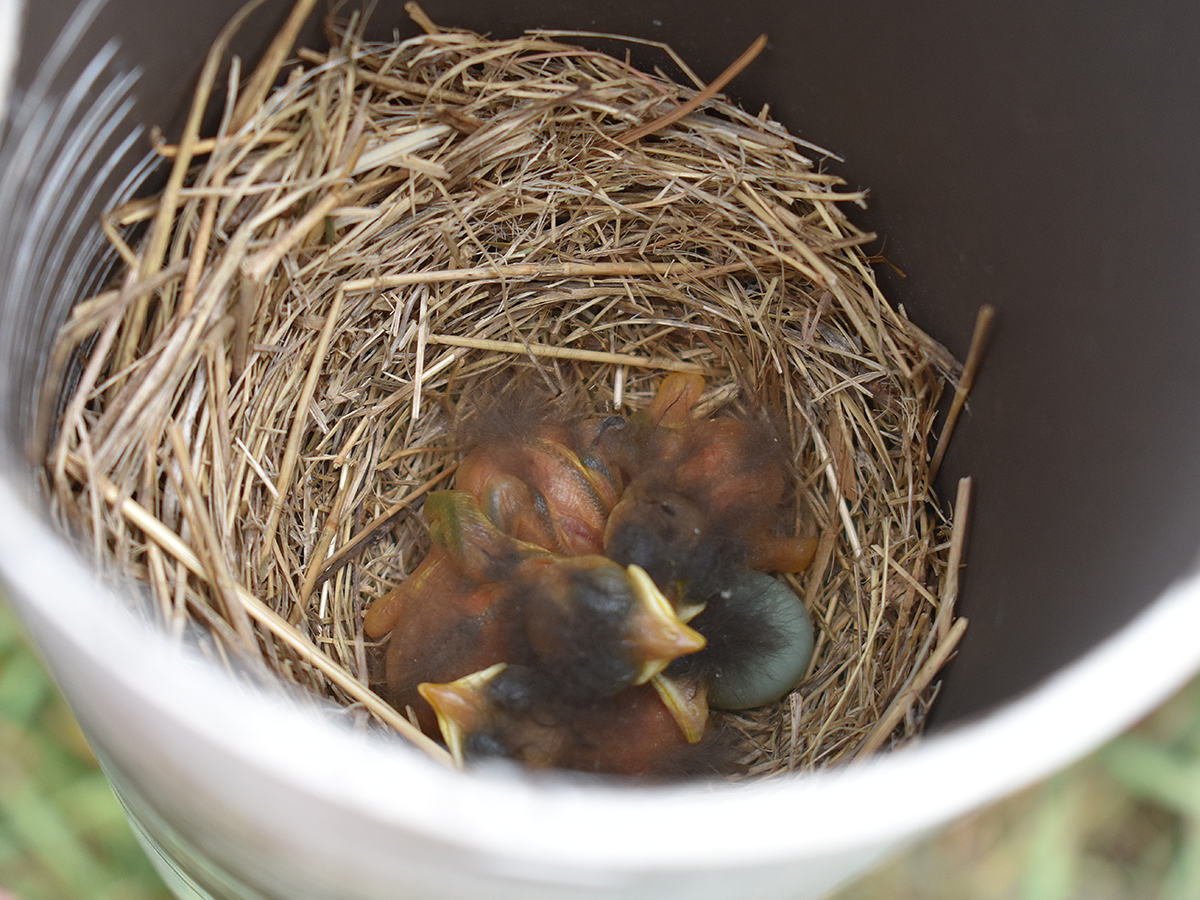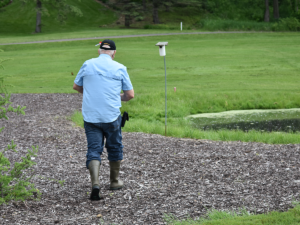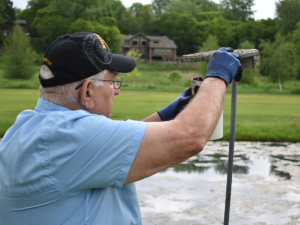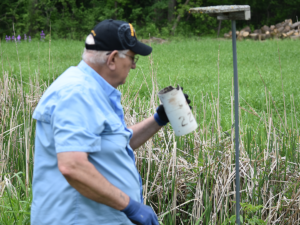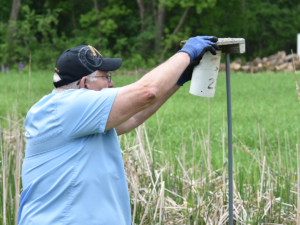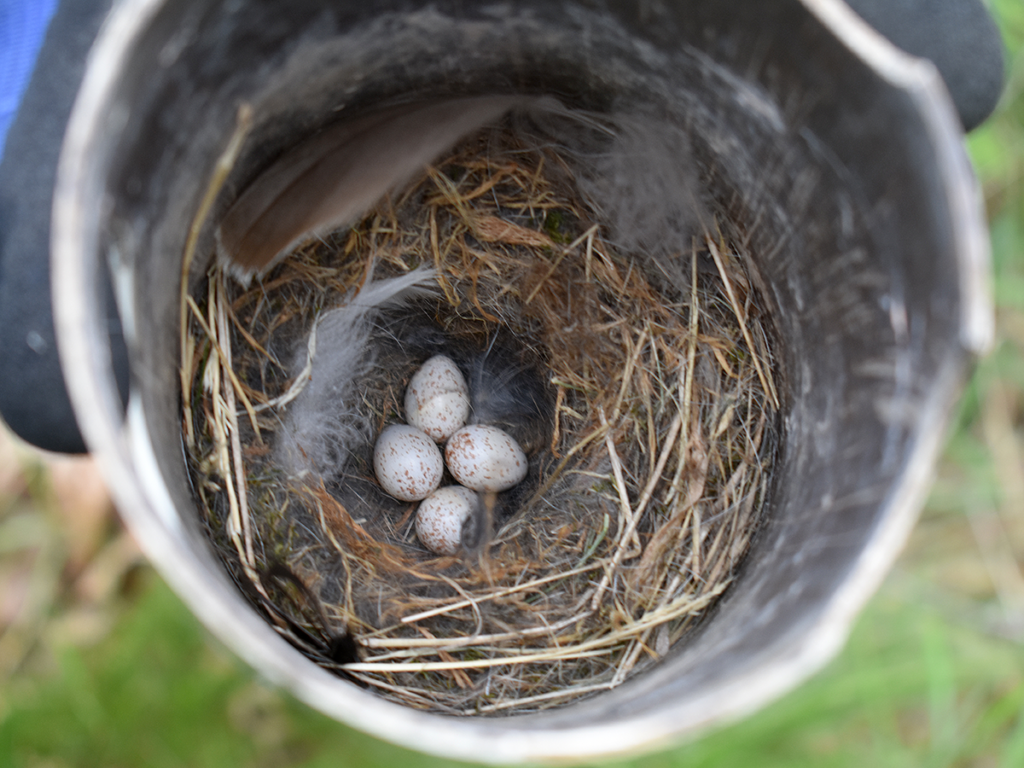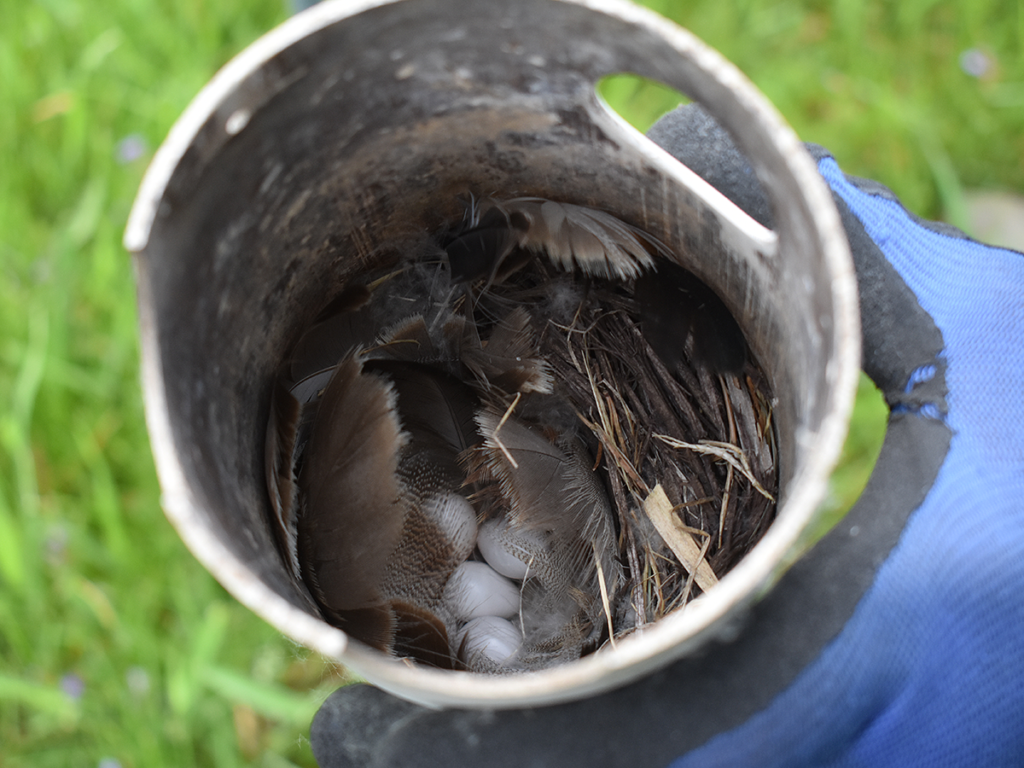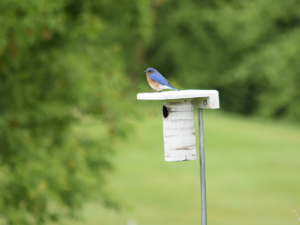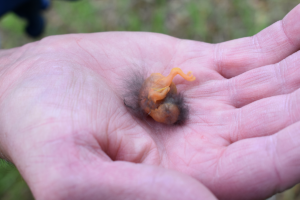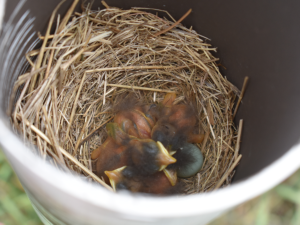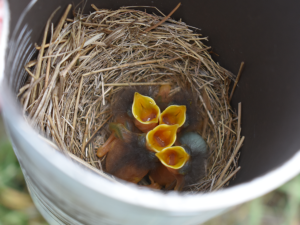This morning I had the opportunity to tag along with George Brown as he checked nest boxes along the bluebird trail he maintains. You may recall from a previous blog post that George is the Ramsey and Washington counties coordinator for the Bluebird Recovery Project (BBRC).
Checking on the nest boxes weekly is a critical function of maintaining a bluebird trail. It involves taking down each nest box, looking inside, documenting any eggs or young that are present—and what species of bird they belong to—and removing any unviable nests. An unviable nest is one that has eggs that go unhatched for multiple weeks in a row (one of the reasons he keeps detailed records), a nest that has been abandoned, or a nest that has been taken over by invasive species (like House Sparrows—which I was happy we didn’t encounter).
As George and I inspected a number of nest boxes, I discovered that it was common to find Tree Swallow, Black-capped Chickadee or Eastern Bluebird nests inside. Also, I learned that it’s easy to quickly identify the type of bird by the way the nest is built: Tree Swallow nests have a mess of loose feathers inside, while chickadee and bluebird nests have neatly formed, cup-shaped nests.
The birds had different reactions to being approached by George and I as well. Typically, a Tree Swallow parent would remain tucked in with their eggs, even as its nest was pulled down and inspected. Chickadees were mostly likely to explosively retreat the nest as it was taken down for inspection, causing quite a startle! Bluebird parents were the most bashful, leaving the nest as soon as they spotted us, then staying away until we’d finished the inspection.
I was beyond ecstatic to have been able to see newly hatched bluebird young in one nest box. They were tiny and naked, save for some scrawny, fur-like feathers (a developmental state described as altricial, as defined in our previous blog post). When George made a quiet whistling sound, all of their beaks immediately snapped open, as if to receive food from their parent.
Another box had bluebird nestlings that may have been a week older; they were larger and more covered with feathers. George placed one in my hand, while assuring me that it’s a myth that birds will “smell human” on them and not return. This bird fit in the cup of my palm easily and was noticeably warm. I could see the development of wings and feel its tiny feet on my skin. I slid it gently back into its nest, knowing that it was an experience I would never forget.
Checking on a bluebird trail has benefits beyond seeing the miracle of birds as they develop. George pointed out a Red-wing Blackbird nest in the reeds of a small pond. We saw a deer bound out of its bed in patch of tall grass. Sandhill Cranes flew over us. A Yellow Warbler scolded us from a nearby cattail as we checked a box. A Green Heron kept a wary eye on us from a nearby water feature. Plus, friendly groundskeepers chatted about their sightings and allowed us to zip along from site to site in an electric golf cart.
This year hasn’t yielded too many bluebird nests on the trail—yet. George tells me that it may be due to a late winter event that occurred in their winter grounds. But the nest boxes as a whole were mostly occupied, and those bluebirds that had found their way to the trail were successfully breeding. Its efforts like those of George Brown and others at the Bluebird Recovery Project, plus those of you who set up a pair of bluebird nest boxes in your yards, that are helping to bring back our Eastern Bluebird population.
For more information about starting or maintaining a bluebird trail, visit the BBRP website, watch this video, or see out Attracting Bluebirds resource (also available in our stores).
By Guest Contributor KATRINA HASE


